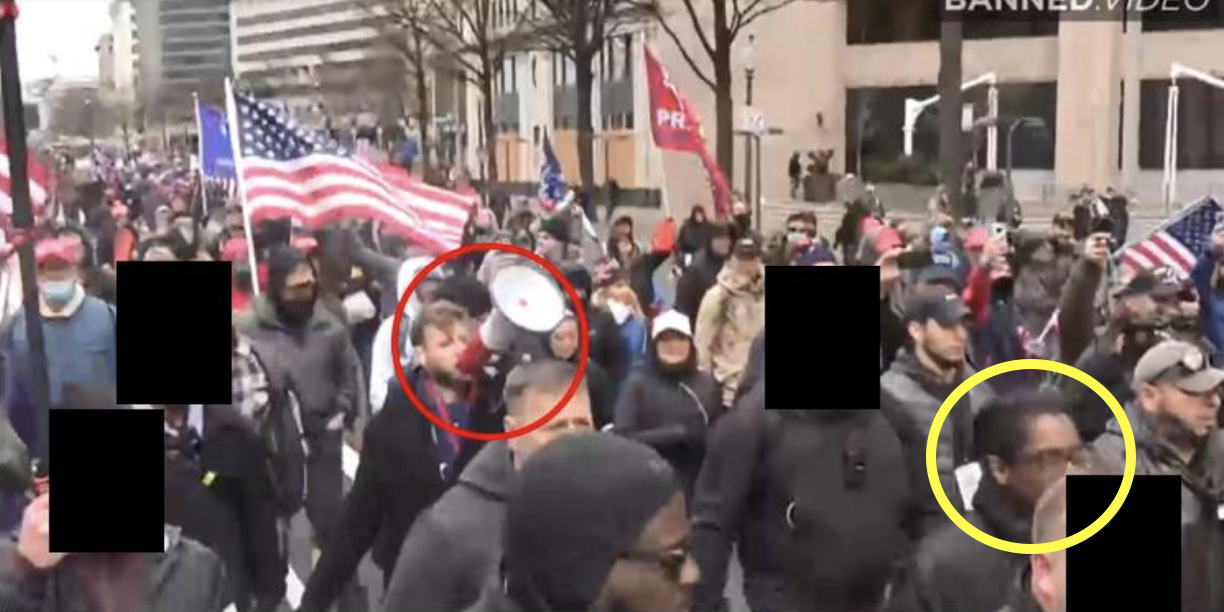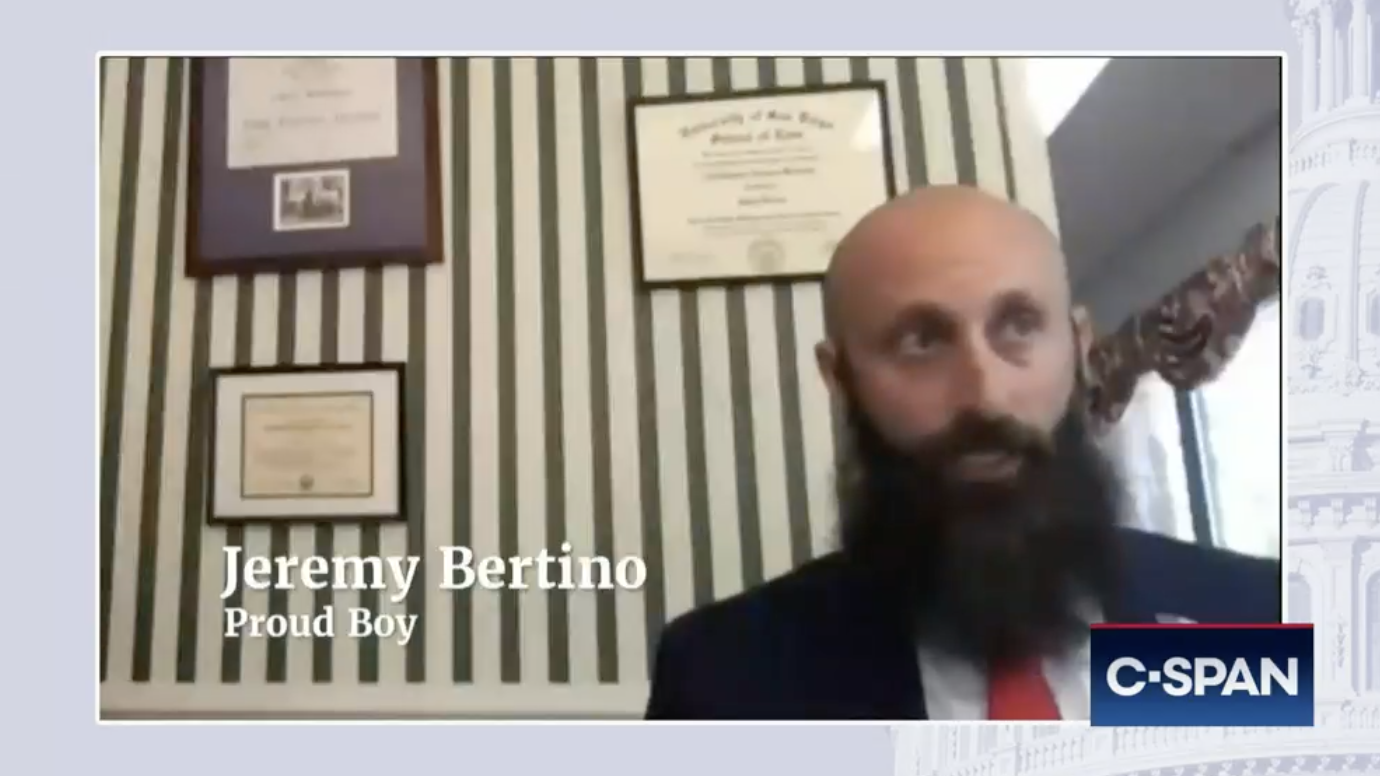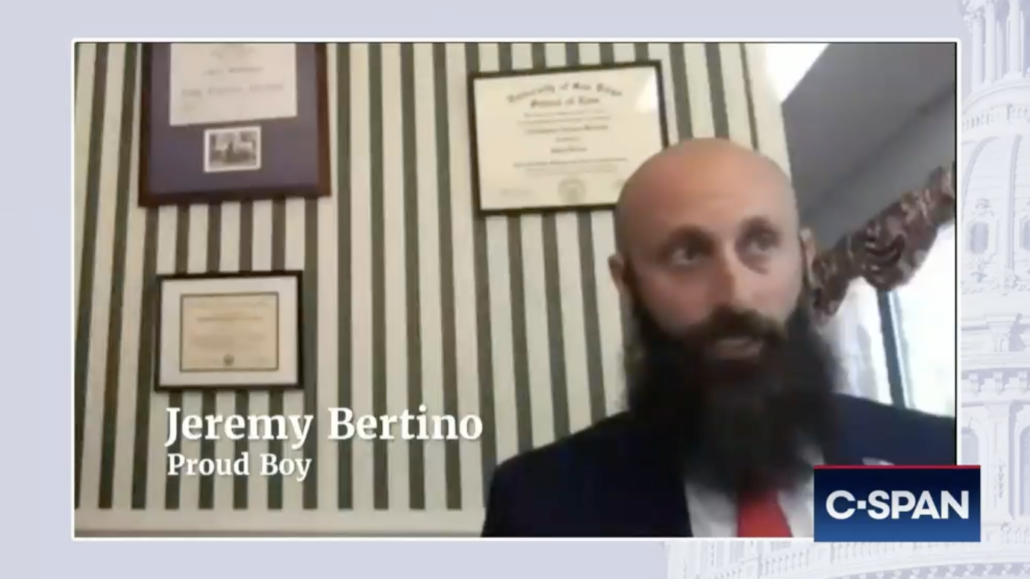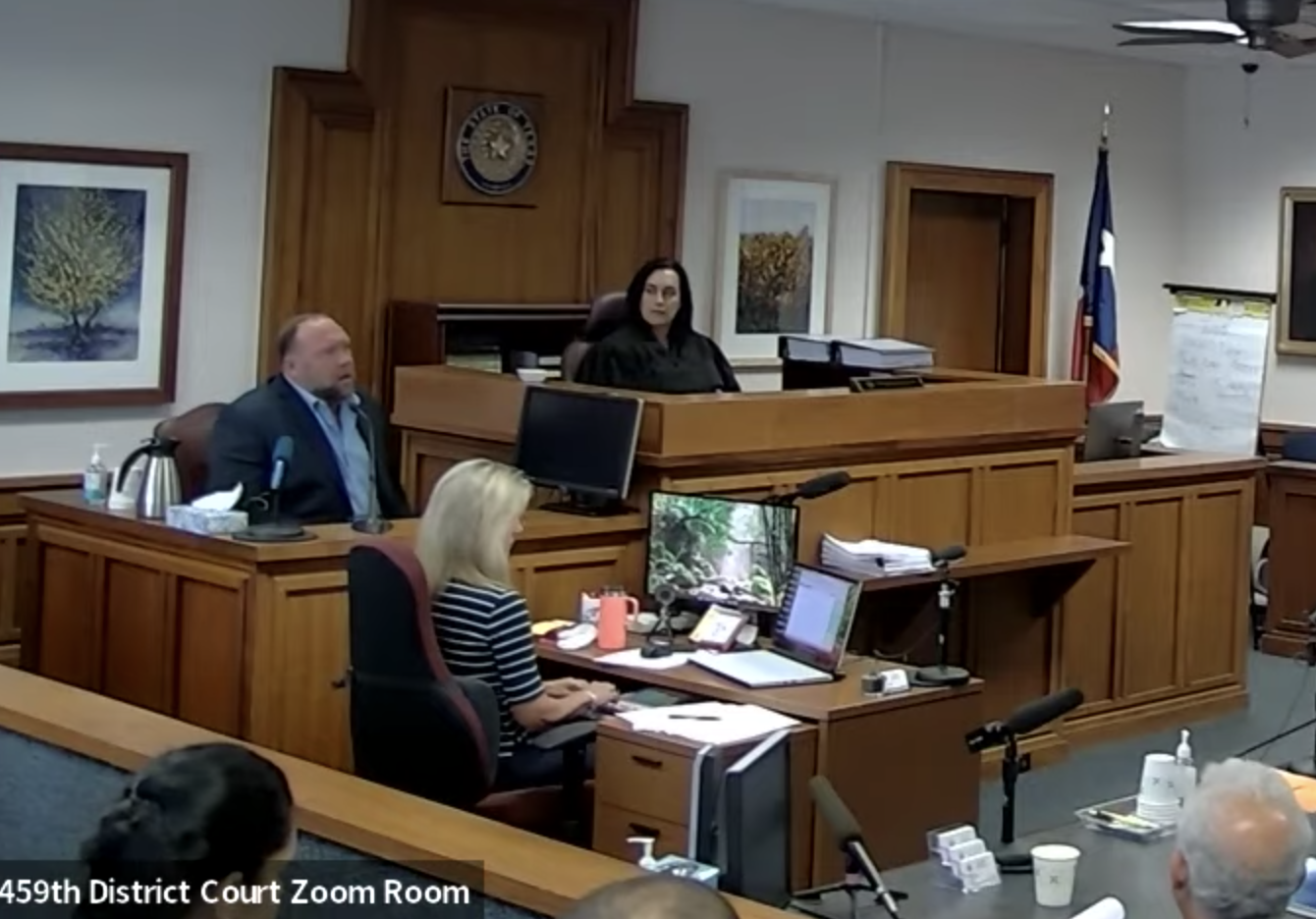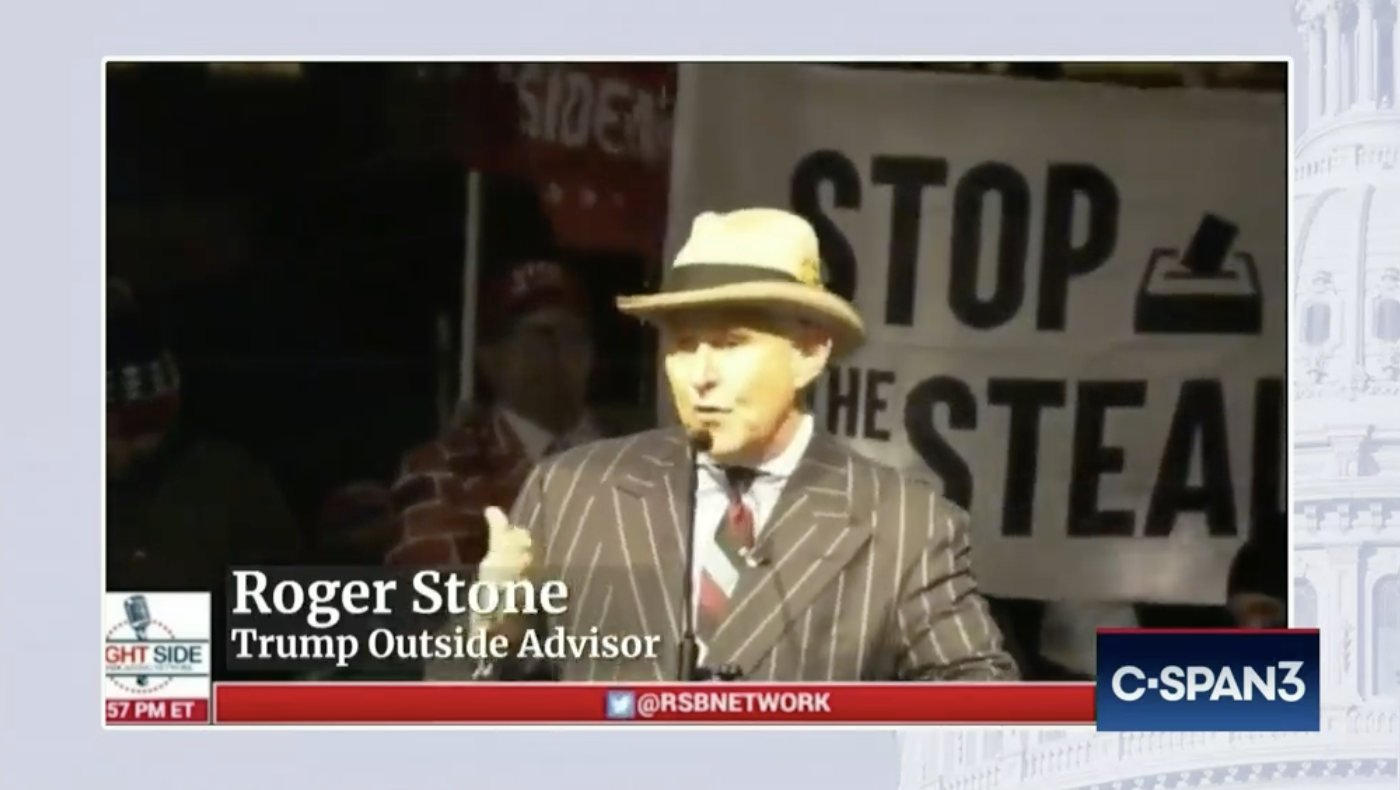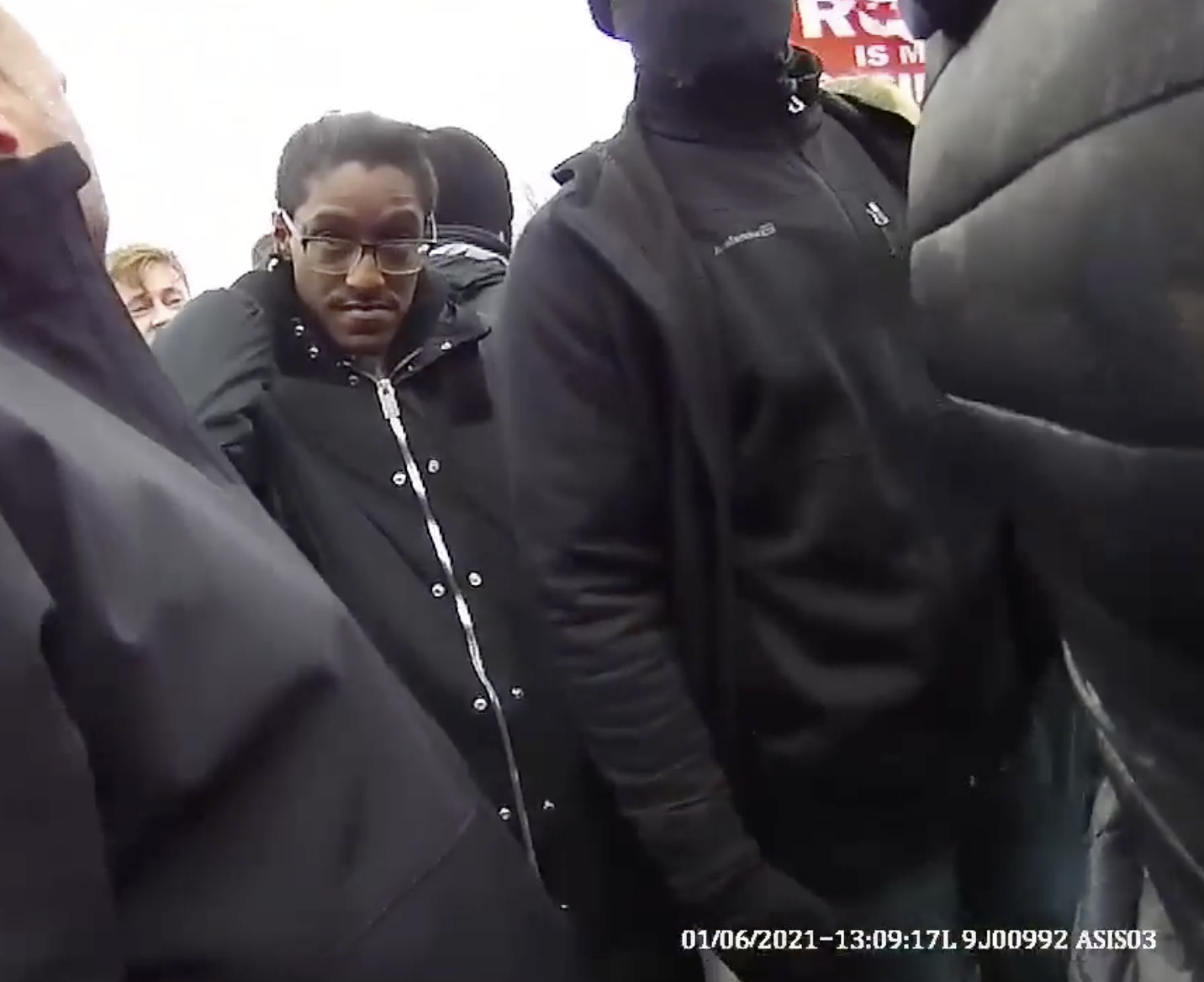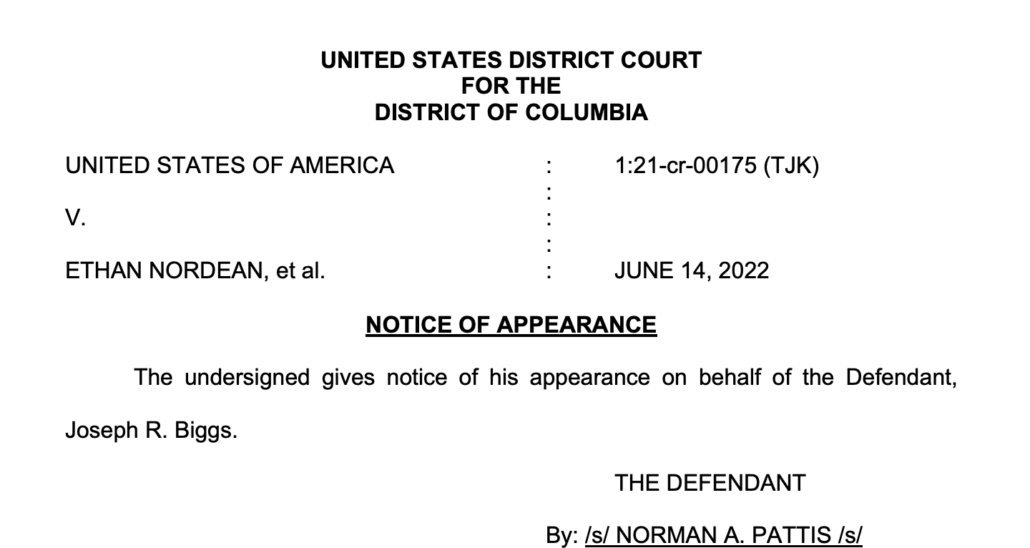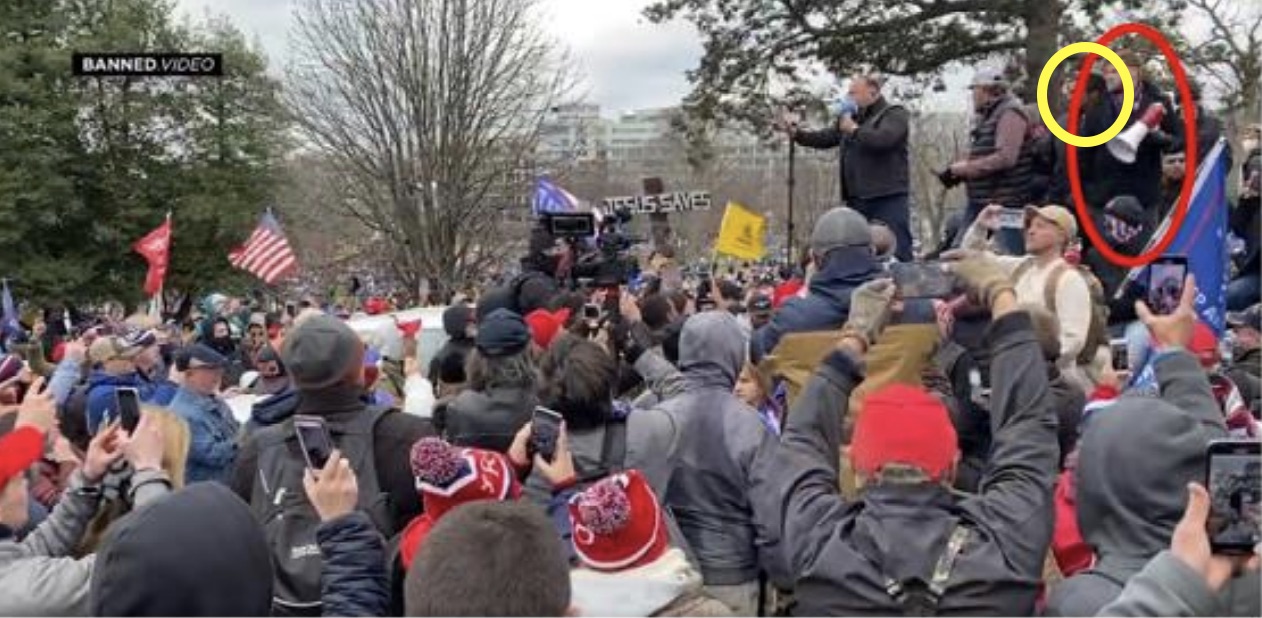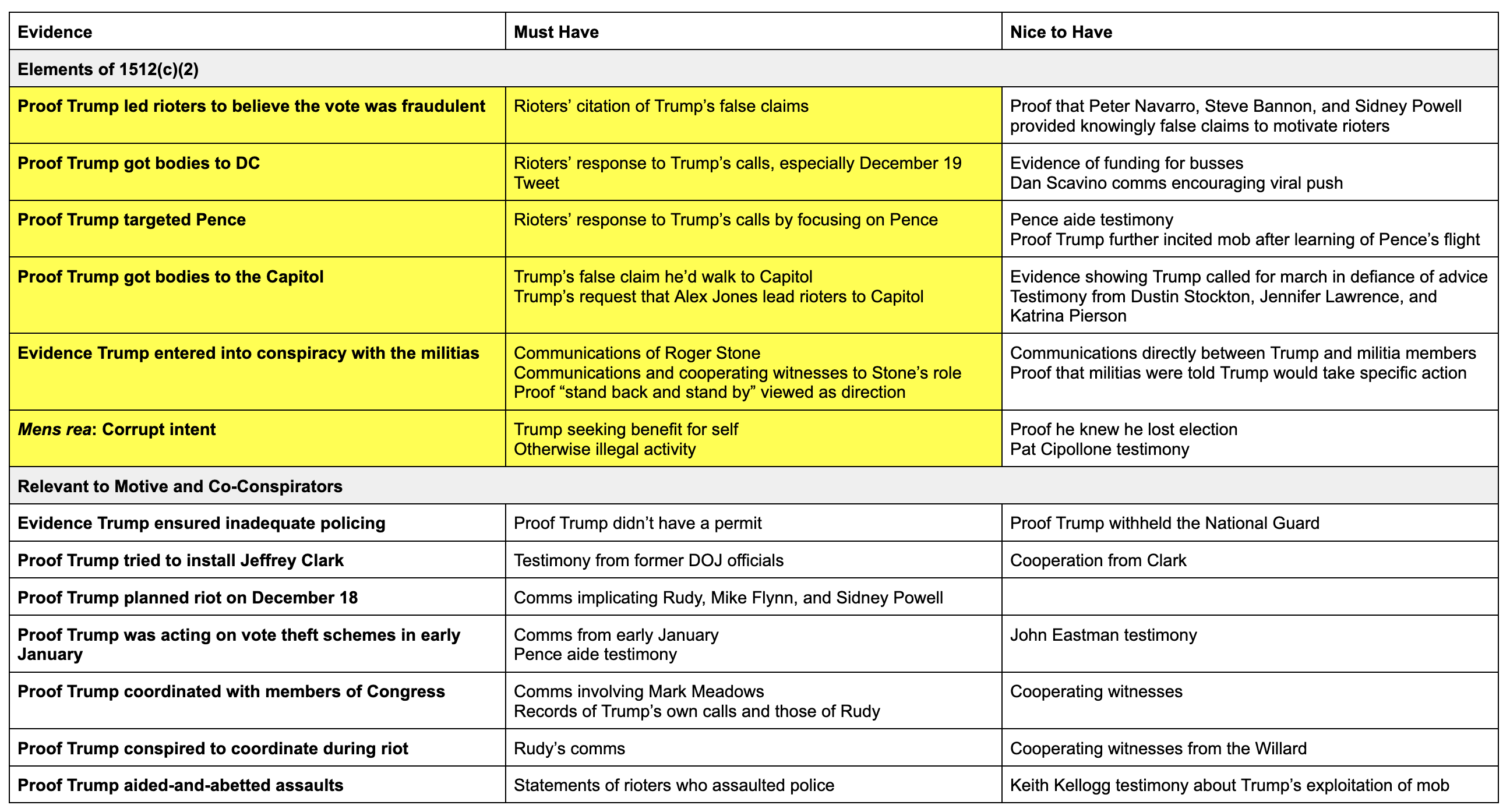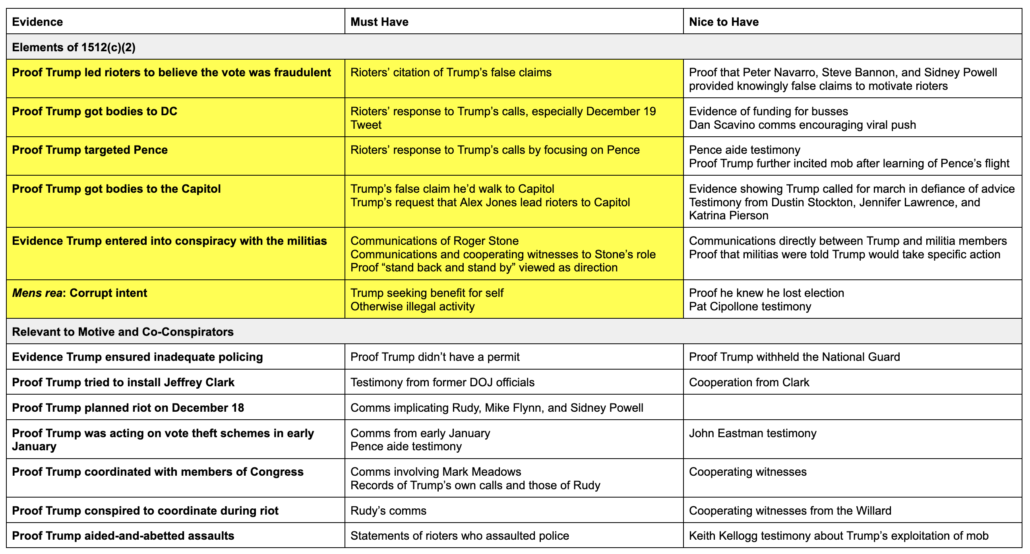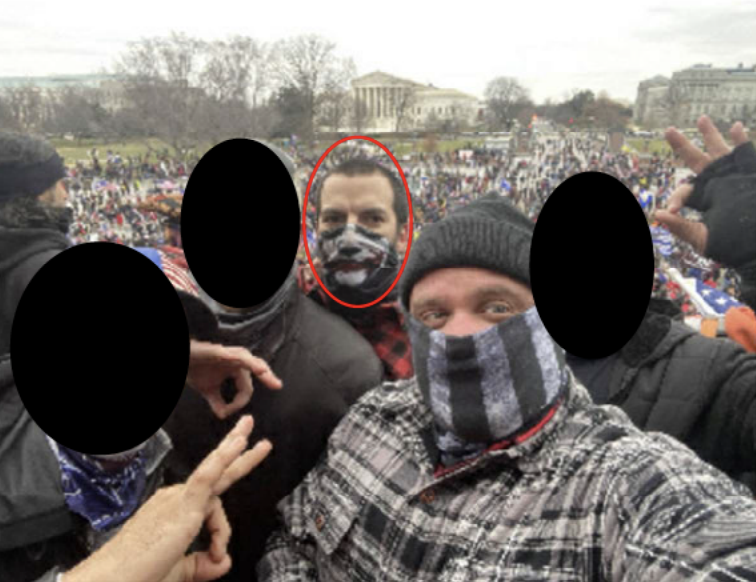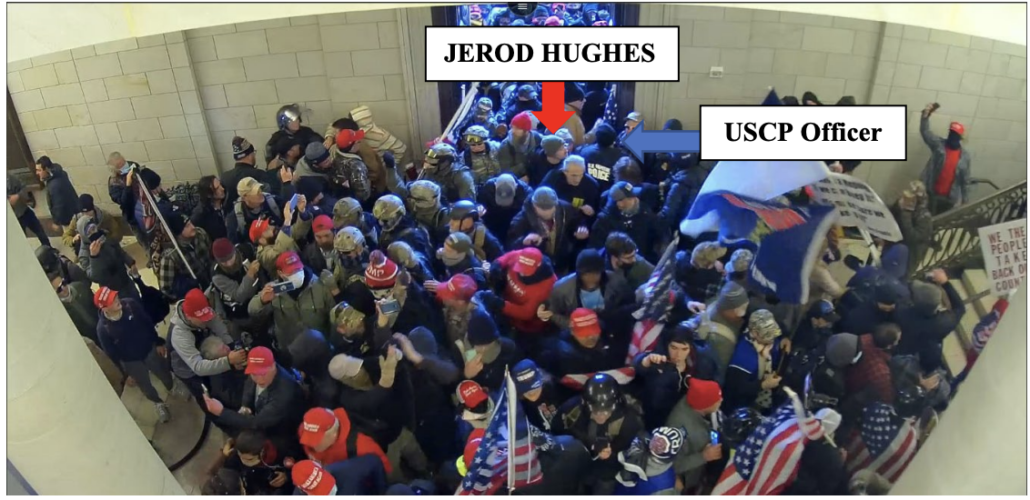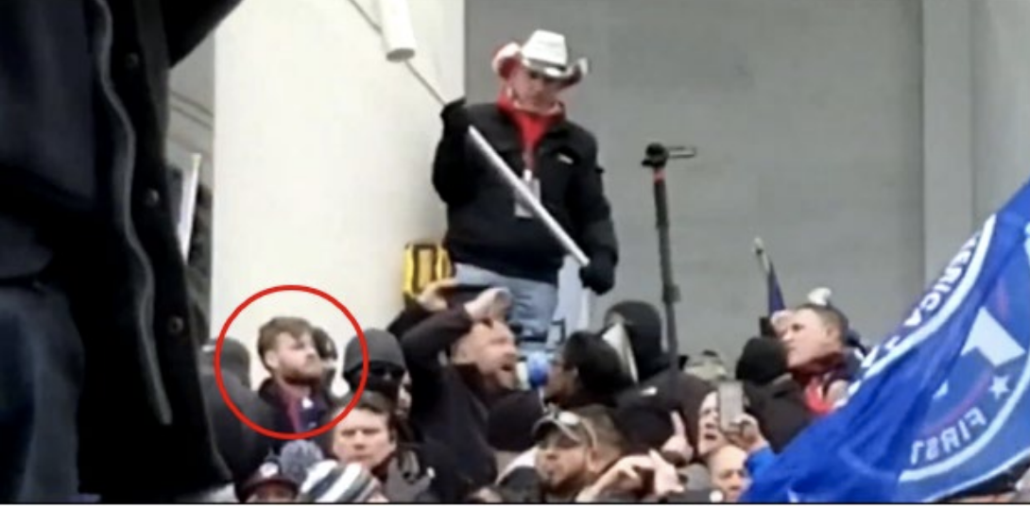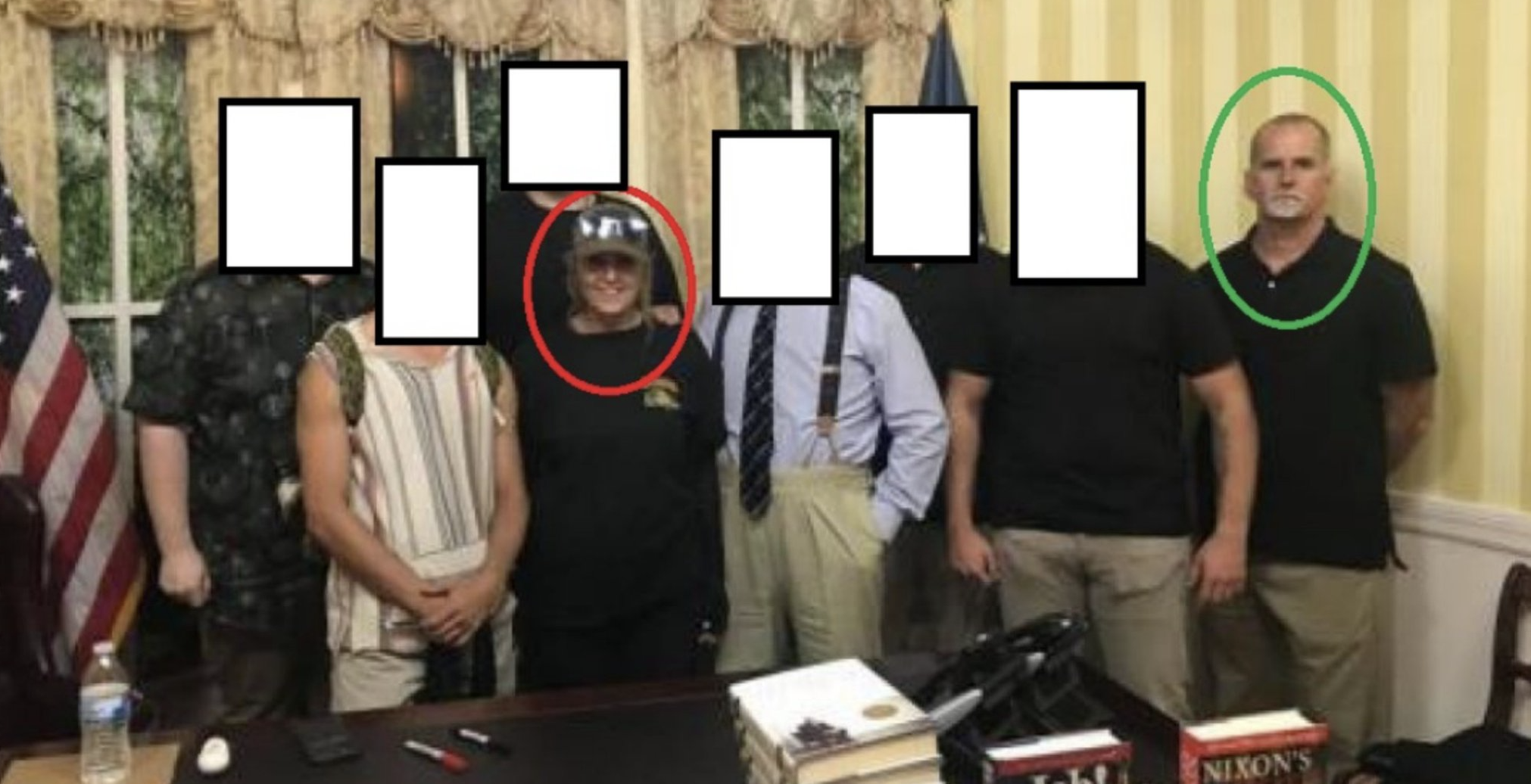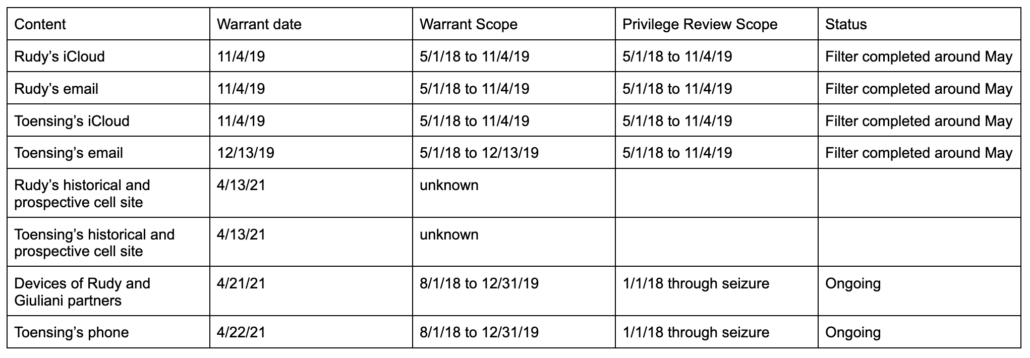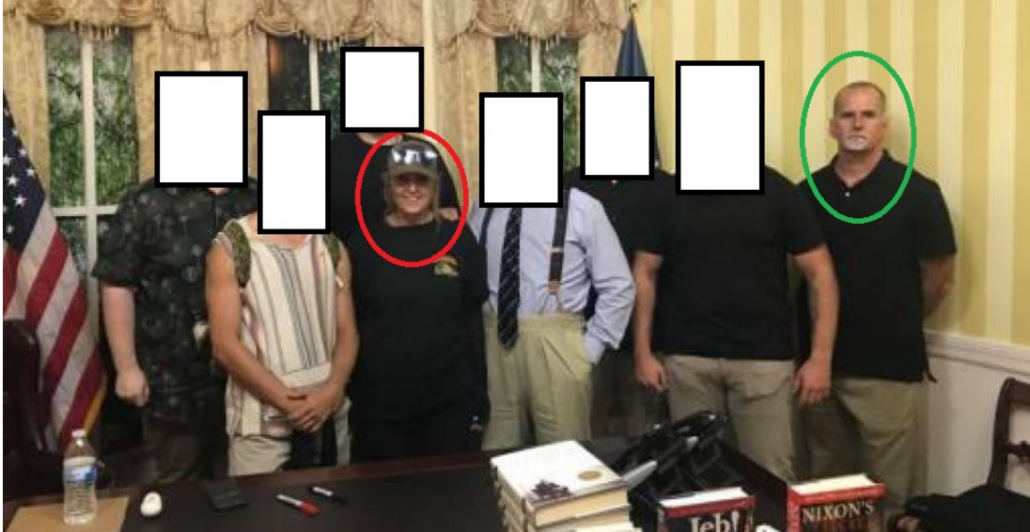WaPo’s First Amendment Blindness: When Exploiting a Media Figure’s Phone Gets Reported as “Cautious”
Ponder this: The Washington Post deems an investigation that fully exploited a high profile media figure’s phone as overly cautious.
To be sure, when WaPo wrote 8,000 words about the January 6 investigation, they exhibited not a shred of awareness that had happened.
But according to an exchange in a June 23, 2022 status hearing in Owen Shroyer’s prosecution, FBI case agents had just obtained the content of Shroyer’s phone and were just beginning to scope it (that is, post-privilege review, to isolate any content that complied with whatever warrant was used to access the phone). Within days after that, Alex Jones lawyer Norm Pattis joined Joe Biggs’ defense team.
As a reminder, in August 2021, DOJ used a pre-existing Deferred Prosecution Agreement with Jones’ sidekick as means to bypass any First Amendment concerns behind arresting Shroyer.
On Friday, Shroyer entered into the standard plea agreement for the more serious of two misdemeanors, requiring that he share his social media activity but not requiring an interview (though sometimes silence about an interview in these standard pleas reflects a prior interview), much less real cooperation. Particularly because of two 2011 DWI-related charges, Shroyer might face a sentence of some weeks or months of jail time, which if he did, would be a sentence imposed by Trump appointee Tim Kelly. While Shroyer’s Statement of Offense mentions Jones as Person One (which DOJ already had in November 2021), it is coy about any knowledge on Shroyer’s part that he and Jones were asked to lead Trump’s mob to the Capitol.
On January 6, 2021, the defendant attended the speeches at the Ellipse in downtown Washington, D.C., as part of the Stop the Steal rally. Early that afternoon, crowds of people began to gather and head towards the Capitol perimeter. The defendant took to a megaphone in front of one of those crowds on Pennsylvania Avenue:
In 1776, the American patriots sent a loud messages to the entire world: Tyranny will not exist in the West. And so now the Democrats are posing as communists, but we know what they really are: they’re just tyrants, they’re tyrants. And so today, January 6, we declare death to tyranny! Death to tyrants! Death to tyrants! Death to tyrants!
En route to the U.S. Capitol, the defendant continued shouting to the crowd walking behind and around him through his megaphone.
Even a declaration Shroyer submitted a year ago said more about his expectations that Trump would lead the march to the Capitol.
Nor does the Statement of Offense say anything about the texts Shroyer exchanged with the Proud Boys in the days and minutes before the attack on the Capitol.
Records for Enrique Tarrio’s phone show that while the attack on the Capitol was ongoing, he texted with Jones three times and Shroyer five times.124 Ethan Nordean’s phone records reflect that he exchanged 23 text messages with Shroyer between January 4th and 5th, and that he had one call with him on each of those days.125 Records of Joseph Biggs’s communications show that he texted with Shroyer eight times on January 4th and called him at approximately 11:15 a.m. on January 6th, while Biggs and his fellow Proud Boys were marching at and around the Capitol.126
Shroyer’s plea agreement was initialed by someone other than Jocelyn Ballantine, the AUSA overseeing complex conspiracy prosecutions.
Shroyer’s treatment, like Brandon Straka’s, may be a sign that DOJ continues to shy away from obstruction charges with the people who, like other rioters, broke the law and exhibited premeditation to obstruct the vote certification, but who might raise more vigorous defenses against obstruction charges.
But whatever else Shroyer’s prosecution represents, it is an instance where DOJ used the arrest of someone who fits solidly within DOJ’s media guidelines to obtain and exploit his phone. All with nary a peep from other journalists.
WaPo’s cavalier attitude towards the First Amendment considerations in this investigation extends into the details that they do provide. Consider how it presents a key showdown in late February 2021. As WaPo describes, JP Cooney pitched a plan to take investigative steps against Roger Stone, Alex Jones, and Ali Alexander directly — precisely the people whose activities might have been captured on Shroyer’s phone.
But a group of prosecutors led by J.P. Cooney, the head of the fraud and public corruption section at the U.S. attorney’s office, argued that the existing structure of the probe overlooked a key investigative angle. They sought to open a new front, based partly on publicly available evidence, including from social media, that linked some extremists involved in the riot to people in Trump’s orbit — including Roger Stone, Trump’s longest-serving political adviser; Ali Alexander, an organizer of the “Stop the Steal” rally that preceded the riot; and Alex Jones, the Infowars host.
[snip]
In February 2021, Cooney took his proposal to investigate the ties with people in Trump’s orbit directly to a group of senior agents in the FBI’s public corruption division, a group he’d worked with over the years and who were enmeshed in some of the most sensitive Jan. 6 cases underway.
According to three people who either viewed or were briefed on Cooney’s plan, it called for a task force to embark on a wide-ranging effort, including seeking phone records for Stone, as well as Alexander. Cooney wanted investigators to follow the money — to trace who had financed the false claims of a stolen election and paid for the travel of rallygoers-turned-rioters. He was urging investigators to probe the connection between Stone and members of the Oath Keepers, who were photographed together outside the Willard hotel in downtown Washington on the morning of Jan. 6. [my emphasis]
This entire section seems reliant on three people familiar with this discussion; there’s no claim it relies on people who actually participated in it (though Michael Sherwin and either Steve D’Antuono directly or via his HJC transcript appear to be key sources for this story).
The description of the plan seems muddled.
JP Cooney, who would have known of Roger Stone’s past incitement of violence with the Proud Boys, couldn’t possibly have focused exclusively on Stone’s ties to the Oath Keepers to the exclusion of the Proud Boys, could he?
Plus, much of the rest of the discussion seems to ignore parts of this plan — such as following the money — that did go forward in 2021, in however curtailed a way. Indeed, in one place WaPo suggests that Garland, in a speech in which he said they were “follow[ing] the money,” had chosen to “start[] with ‘the people on the ground’ and work[] up,” a description that ignores the investigation into Sidney Powell’s grifting that was overt by September 2021. So it’s not clear whether Axelrod vetoed the entire plan, or just those two parts of it.
In any case, FBI agents balked and got two men with clear conflicts in the investigation, D’Antuono and Sherwin, to review and elevate concerns about Cooney’s plans.
Inside the FBI’s Washington Field Office, agents recognized Cooney’s presentation for the major course change that it presented. Investigators were already looking for evidence that might bubble up from rioter cases to implicate Stone and others. Cooney’s plan would have started agents looking from the top down as well, including directly investigating a senior Trump ally. They alerted D’Antuono to their concerns, according to people familiar with the discussions.
D’Antuono called Sherwin. The two agreed Cooney did not provide evidence that Stone had likely committed a crime — the standard they considered appropriate for looking at a political figure. Investigating Stone simply because he spent time with Oath Keepers could expose the department to accusations that it had politicized the probe, they told colleagues.
D’Antuono took the matter to Abbate, Wray’s newly named deputy director. Abbate agreed the plan was premature.
Sherwin similarly went up his chain of command, alerting Matt Axelrod, one of the senior-most officials Biden installed on his landing team at “Main Justice,” as the DOJ headquarters on Pennsylvania Avenue NW is known. Axelrod, a top Justice Department official during the Obama administration, had been tapped by Biden’s transition committee to help run the department day-to-day until Garland and Monaco could be confirmed.
This led to a meeting among top people, not all of whom are named. As described, Obama DOJ veteran Matt Axelrod objected primarily to two parts of the plan: to obtain membership rolls for the Oath Keepers (again, this story is silent about the Proud Boys) and information on permits for rallies.
Axelrod called a meeting for the last week of February with Sherwin, D’Antuono, Abbate and other top deputies. Cooney wasn’t there to defend his plan, according to three people familiar with the discussion, but Axelrod and Abbate reacted allergically to one aspect of it: Cooney wanted membership rolls for Oath Keepers as well as groups that had obtained permits for rallies on Jan. 6, looking for possible links and witnesses. The two saw those steps as treading on First Amendment-protected activities, the people said.
Axelrod saw an uncomfortable analogy to Black Lives Matter protests that had ended in vandalism in D.C. and elsewhere a year earlier. “Imagine if we had requested membership lists for BLM” in the middle of the George Floyd protests, he would say later, people said. [my emphasis]
It’s not even clear that obtaining the membership lists would be constitutional under NAACP v. Alabama. Plus, given the in-fighting within the Oath Keepers (and the Proud Boys) it’s also not clear it would be that useful. Ultimately, prosecutors worked from the content seized from arrestees’ phones and other evidence of ties between actual co-conspirators. That caused a significant part of the delay before charging both Stewart Rhodes and Enrique Tarrio, but in the latter’s case, that was a year-long delay to access evidence seized before January 6!
In both militia leader prosecutions, only content that would have been viewed by charged co-conspirators came in as evidence — but even there, defendants in both trials argued this exceeded the First Amendment.
Which is to say that Axelrod’s concerns about membership lists were not only right from a legal and civil liberties perspective, but possibly even from an efficacy one as well.
That’s far less clear with regards to information on people who had permits for rallies on January 6. That’s especially true given WaPo’s silence about Brandon Straka’s so-called cooperation, without consideration of which this story is incomplete.
Brandon Straka, recall, is one of the key “influencers” behind Stop the Steal; he played a key role in the TCF protest in Michigan. He attended the January 6 rally as a VIP, sitting right next to Mike Flynn. He stopped at the Willard between the time he left the rally and took the Metro to the Capitol, expecting to speak. He was initially charged with civil disorder and — based on the standards applied to other rioters — could easily have been charged with obstruction. Instead, he was given credit for cooperating in two early FBI interviews, and ultimately pled only to the less serious trespassing charge, to be sentenced to three years of probation.
According to his cooperation memo, Straka provided information on Alexander, Cindy Chafian, and the Kremers (as well as the Stop the Steal DM list) starting on February 11, in advance of the late February meeting discussing Cooney’s plan. That makes it likely that Cooney’s plan was partly a response to Straka’s first interview. My view — and that of everyone I know who has followed Straka’s prosecution closely — is that FBI agents who interviewed Straka were wildly credulous about his answers. FBI investigators bought stories that January 6 Committee investigators later poked big holes in. And neither the FBI nor the DOJ adequately investigated Straka’s role in inciting violence earlier, though DOJ may have revisited it after Probation discovered how he profited off his false claims.
If Cooney’s plan was an attempt to capitalize on Straka’s so-called cooperation, the failure started with the FBI agents getting bulldozed by Straka’s claims, not more senior decision-makers (though by all reports, D’Antuono would certainly have protected such investigative ineptitude).
Whatever the merit of Axelrod’s decision, WaPo describes it to be a decision about the First Amendment, not one about politics.
It then uses a decision it describes to arise from First Amendment concerns, describes that “some” of the half dozen or so present — at least two of whom had clear conflicts — also had political concerns.
Axelrod later told colleagues that he knew Jan. 6 was an unprecedented attack, but he feared deviating from the standard investigative playbook — doing so had landed the DOJ in hot water before. Former FBI director James B. Comey’s controversial decision to break protocol — by publicly announcing he was reopening the investigation into Clinton’s emails days before the 2016 presidential election — was widely viewed as swinging the contest in Trump’s favor.
Some in the group also acknowledged the political risks during the meeting or in subsequent conversations, according to people familiar with the discussions. Seeking the communications of a high-profile Trump ally such as Stone could trigger a social media post from Trump decrying yet another FBI investigation as a “witch hunt.” And what if the probe turned up nothing? Some were mindful, too, that investigating public figures demanded a high degree of confidence, because even a probe that finds no crime can unfairly impugn them.
All who assembled for the late February meeting were in agreement, with Axelrod making the final call: Cooney’s plan would not go forward.
Aspects of the proposal were reported in 2021 by The Post and the New York Times. But the identity of the prosecutor who pushed for the plan, several of its details and the full story of how it galvanized the Justice Department’s approach to the Jan. 6 investigation have not been previously revealed.
Inside the FBI’s Washington Field Office, buzz about who might join the task force to investigate those around Trump dissipated as word spread that plans for the team had been shelved. In the U.S. attorney’s office, budding investigative work around the finances of Trump backers was halted, an internal record shows, including into Jones, who had boasted of paying a half-million dollars for the president’s Jan. 6 rally and claimed the White House had asked him to lead the march to the Capitol. [my emphasis]
WaPo then appears to apply the political squeamishness it attributes to just “some” participants in a meeting attended mostly by people who’ve moved on, to all of DOJ’s subsequent decisions, dropping consideration of the very real First Amendment concerns that have been an issue at virtually every prosecution to date to say nothing of evidentiary concerns that the Rhodes prosecution bore out.
A Washington Post investigation found that more than a year would pass before prosecutors and FBI agents jointly embarked on a formal probe of actions directed from the White House to try to steal the election. Even then, the FBI stopped short of identifying the former president as a focus of that investigation.
A wariness about appearing partisan, institutional caution, and clashes over how much evidence was sufficient to investigate the actions of Trump and those around him all contributed to the slow pace. Garland and the deputy attorney general, Lisa Monaco, charted a cautious course aimed at restoring public trust in the department while some prosecutors below them chafed, feeling top officials were shying away from looking at evidence of potential crimes by Trump and those close to him, The Post found.
[snip]
The Justice Department’s painstaking approach to investigating Trump can be traced to Garland’s desire to turn the page from missteps, bruising attacks and allegations of partisanship in the department’s recent investigations of both Russia’s interference in the 2016 presidential election and Hillary Clinton’s use of a private email server.
Inside Justice, however, some lawyers have complained that the attorney general’s determination to steer clear of any claims of political motive has chilled efforts to investigate the former president. “You couldn’t use the T word,” said one former Justice official briefed on prosecutors’ discussions. [my emphasis]
Within two months after DOJ, prior to Garland’s confirmation, halted the investigation into Jones, FBI arrested his videographer Sam Montoya, followed four months later by the Shroyer arrest. Magistrate Judge Zia Faruqui was so skeptical that Shroyer’s arrest met DOJ’s own media guidelines that he demanded additional briefing before approving the arrest warrant; and in approving it, he suggested that Shroyer had the intent of obstructing the vote certification.
Shroyer’s arrest, in particular, was an opportunistic step, one that used his prior DPA to take a step that otherwise would have — and did, from Faruqui — elicit objections, in order to pursue evidence that might have (and still might!) substantiate the ties between Jones and the assault on the Capitol.
That makes his treatment similar to the treatment DOJ used with Rudy Giuliani — another investigative angle about which WaPo was not just unaware but affirmatively mistaken.
Approving the seizure of Rudy Giuliani’s phones on her first day on the job and taking subsequent steps to ensure all the content on them, including the January 6 content, got a privilege review from the start was not cautious. Using Shroyer’s prior DPA as a means to arrest a key pivot between the crime scene and the Willard was not cautious.
They were steps designed to obtain key evidence without attracting undue attention. And the steps themselves, at least, succeeded so well, the WaPo wrote an 8,000 word story purporting to describe the investigation, yet missed both of them.

